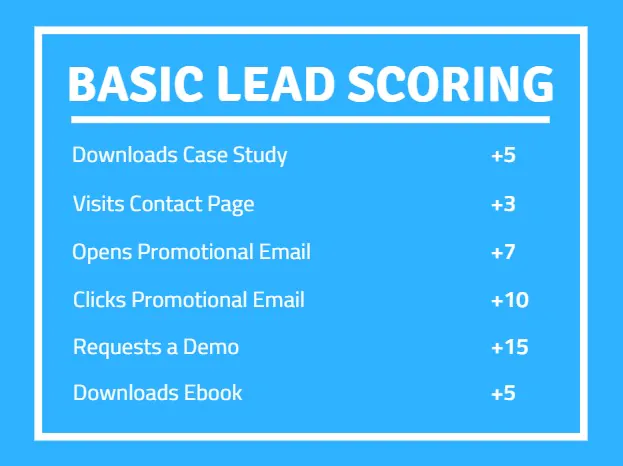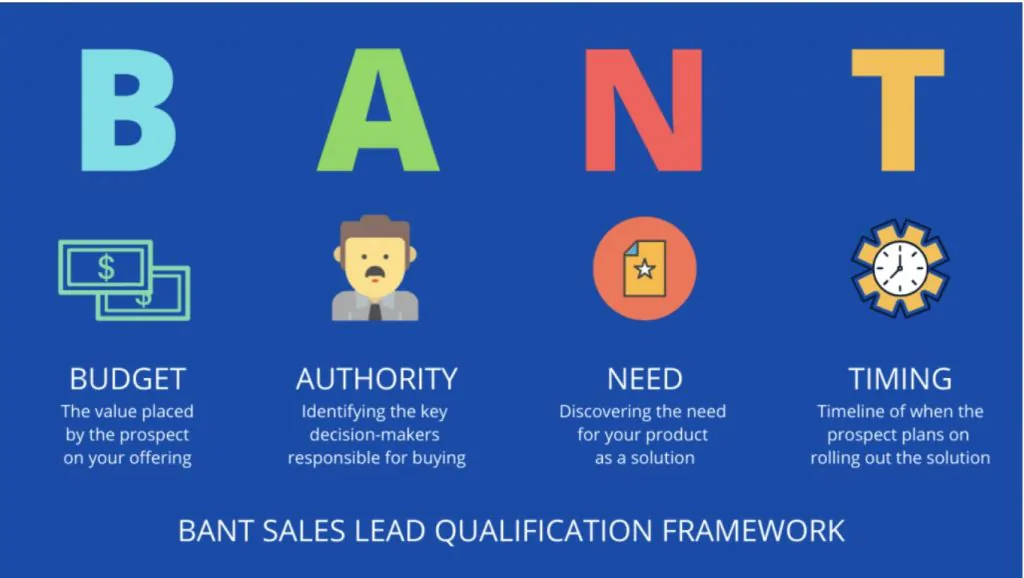How much time does your marketing team spend pursuing weak leads? Do they have a solid lead qualification process down?
Since 4% of website visitors aren’t ready to buy, your sales representatives could easily waste over 96% of their time in dead-end calls to one-time online visitors. However, you can identify which leads are most likely to turn into conversions with a strategic lead qualification process.
Today we will look at five ways you can improve your lead qualification process.
Key Takeaways:
- Lead qualification helps save your business hours by weeding out weak leads.
- A successful lead qualification process combines automated scoring with manual data collecting.
- Quality leads are more valuable than a large number of leads.
Lead Qualification Meaning
Successful companies often see thousands of leads pouring in from online contact forms, company networking, cold calls, sales records, and other marketing channels. However, not all those leads are equal. Instead of wasting time on lesser leads, you can use lead qualification to sort your leads by their probability of becoming a conversion.
Lead qualification will significantly lessen the number of leads you have. However, quality leads are far more preferable than a large number of leads. Quality leads are those that turn into loyal customers. In addition, qualifying leads will also help you learn more in-depth information about your audience to assist you in future marketing strategies.
Source: Neil Patel
5 Ways to Improve Your Lead Qualification Process
Are you still dealing with too many weak leads at the end of your qualification process? Here are five lead qualification stages to improve your conversion rate.
1. Create an Ideal Customer Profile
The lead qualification process uses a customer profile based on characteristics that make the ideal customer, known as the Ideal Customer Profile (ICP). Your ICP should paint an image of a person or business most likely to purchase from your company. You can use data collected from past customers as inspiration when designing your ICP.
For example, advertising businesses would design an ICP based on enterprises most likely to hire their services using data like budget, industry, and location.
2. Use Quality Marketing Strategies
About 61% of B2B marketers identified finding high-quality leads as their biggest challenge. You can save yourself additional time in the lead qualification process by investing in a marketing strategy to attract more qualified leads rather than reach a large audience.
For example, create content using keywords that your target audience uses rather than general search terms. You can also add content to your website as lead magnets to attract those interested in your business. Some examples of lead magnets include downloads, newsletters, and free courses.
In addition, you should focus your lead generation on platforms your target audience is most likely to frequent. For example, Facebook and Instagram work well for B2C marketing, whereas LinkedIn and Twitter are more suitable for B2B marketing.
The leads you gather through your targeted content, and strategic channels are marketing qualified leads (MQL).
3. Automate Lead Scoring
Lead scoring is an automated process of assigning scores to your leads based on customer data. The leads with the highest scores are most likely to buy from your business.
Some of the characteristics the scores use include:
- Number of visits to your website
- Pages leads visit, such as the pricing page
- How long leads remain on your website
- Original search terms used – company name vs. general keyword
- Engagement with your online content
- Customer data such as employment and industry
Source: MXTR
The final score will remain active throughout your qualification process. Whenever customers interact with sales representatives or your website, you can add that data to their final score.
4. Qualify Leads through Collected Data
Now that your automation has helped significantly cut down on the number of leads, you can begin manually qualifying your leads using your available customer data. For example, at this point, you can sort out leads that are not based in your area or are in a different industry than your business.
If you still have hundreds of leads, you can further filter them by sending out a questionnaire or having a preliminary phone screening where a sales representative asks them basic questions about their needs and interests.
At this point, your MQL becomes a sales-qualified lead (SQL).
5. Ask Qualifying Questions
Once you have narrowed down your qualified leads based on data you already collected, your sales team is ready to begin reaching out to those leads to complete the qualification process. Calling leads is the most-used method to qualify leads.
Here are a few examples of standard question formulas for lead qualification.
BANT (Budget, Authority, Need, Timing)
- What is their budget?
- Do they have the authority to purchase?
- Do they need our products?
- What is their intended timing of purchase?
Source: Medium
GPCTBA/C&I (Goal, Plans, Challenges, Timeline, Budget, Authority, Negative Consequences, Potential Implications)
- What is their goal?
- What are their plans?
- Do they have any challenges?
- What is their timeline for achieving their goal?
- Is the solution in their budget?
- Does the lead have the authority to decide?
- What are the negative consequences of not meeting their goal?
- What are the potential implications of achieving their goal?
CHAMP (Challenges, Authority, Money, Prioritization)
- What are the lead’s challenges?
- Are they in a position of authority to decide?
- Do they have the money to purchase?
- Are they prioritizing the solution?
MEDDICC (Metrics, Economic Buyer, Decision Criteria, Decision Process, Identify Pain, Champion, Competition)
- What are the lead’s goals?
- Who is responsible for deciding?
- What are the requirements for the solution?
- How will the lead choose a solution?
- What are their pain points?
- Who will be promoting the solution?
- Who is the competition?
Your sales team can identify the leads ready to purchase and are most likely to respond positively to a sales pitch through these questions. These are the leads your team can focus their time on.
However, you should not discard the remaining leads. Some of them are potential future customers. They just need to mature through nurturing.
Never Lose Another Qualified Lead
Lead qualification can be a long and timely process without the right software. With MXTR, you can track, nurture, and convert leads through our multi-location marketing automation, so you never have to lose another qualified lead again.
Schedule a demo to see the benefits of lead qualification through our technology.
Feature Image: 123rf







